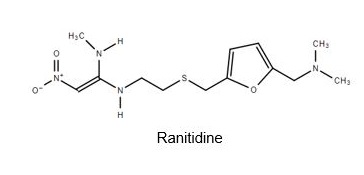Author: Valentina Shakhnovich, MD on March 09, 2020 
Cancer. Carcinogen. Malignancy. These are scary words for a patient to hear, particularly when they refer to the risk of a drug prescribed for the treatment of a relatively benign condition.
On Sept. 13, 2019, the US Food and Drug Administration (FDA) issued a statement that some ranitidine products (medications used for the treatment of acid reflux) contain small amounts of a nitrosamine impurity called N-nitrosodimethalamine (NMDA), which is classified as a probable carcinogen in humans. From there, the story went viral. Before the FDA could complete its investigation, ranitidine products were voluntarily recalled and removed from the shelves of many pharmacies. The media coverage surrounding this story led to countless phone calls to physicians’ offices from concerned, scared, and sometimes outraged patients. In a very timely Clinical and Translational Science commentary, “Medicine and Media: The Ranitidine Debate,” Wagner & Colombo provide a succinct summary of the still evolving NMDA contamination story, putting the available scientific evidence into context and highlighting the role of the media in policing drug safety.
Media service, hype, or harm? You decide.
Image by Wagner and Colombo. Clin. Trans. Sci https://ascpt.onlinelibrary.wiley.com/doi/10.1111/cts.12753. Published 2020. Clinical and Translational Science published by Wiley Periodicals, Inc. on behalf of the American Society for Clinical Pharmacology and Therapeutics.

The comment feature is locked by administrator.